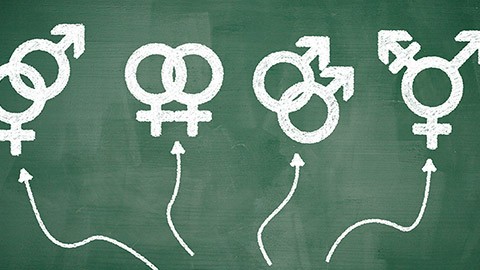A “near-perfect, quasi experiment”

One of the most controversial questions facing researchers has been the nature vs. nurture debate as it relates to sexual orientation. In their 2016 article, J. Michael Bailey, PhD, and his colleagues describe a key source of evidence pointing to the role of biology—that is, nature—over nurture.
Between 1960 and 2000, doctors believed that babies who were biologically male but had malformed penises, or whose penises were lost in surgical accidents, would be better off being surgically altered and socially reassigned female. This belief has changed, as has medical practice. But in the meantime, a generation of individuals born biologically male were raised as girls, creating a kind of “natural experiment.”
Scientists were curious—what had their sexual orientation turned out to be? As Dr. Bailey and his fellow researchers explain, in the cases in which the sexual identity of these individuals is known, it has been found to be “predominantly or exclusively gynephilic (i.e., attraction was toward women)” (Bailey et al., 2016, pp. 72-73).
What does this tell us? Since the vast majority of men are heterosexual, Dr. Bailey and his colleagues explain that this is the result that would be expected if nature, not nurture, accounts for the development of sexual orientation:
“These results comprise the most valuable currently available data concerning the broad nature-versus-nurture question for sexual orientation. They show us how difficult it is to derail the development of male sexual orientation by psychosocial means. If one cannot reliably make a male human become attracted to other males by cutting off his penis in infancy and rearing him as a girl, then what other psychosocial intervention could plausibly have that effect? These cases establish a strong prima facie case that in males, heterosexual orientation is at least partly established before birth. And if male heterosexual orientation is so difficult to alter after birth, there is no reason to doubt the same is true of male homosexual orientation.” (Bailey et al., 2016, p. 73)
As the Bailey, et al., article points out, this study involved a relatively small number of people. And, for obvious reasons, the “near-perfect quasi-experiment” is impossible to replicate. Also, the findings are limited to male sexual attraction. Explore more in the next sections to learn more about scientists’ efforts to understand the development of sexual orientation in both men and women.
Featured Content
Read this summary article reference by Bailey, et al, providing a comprehensive view of current scientific findings regarding sexual orientation.
References:
Bailey, J.M., Vasey, P.L., Diamond, L.M., Breedlove, S.M., Vilan, E. & Epprecht, M. (2016). Sexual orientation, controversy, and science. Psychological Science in the Public Interest, 17(2), 45-101. https://journals.sagepub.com/doi/pdf/10.1177/1529100616637616
